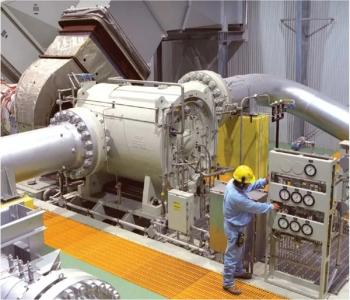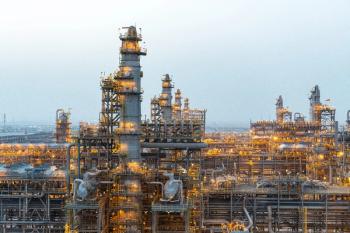
INDUSTRY NEWS
Germany’s flawed energy law
“Energiewende,” or energy transformation, is the catchword for the 2011 German energy law that aims to phase out nuclear power by 2022, replacing it primarily with renewables. The lawand its possible consequences were the focus of Bernhard Fischer’s keynote address at the PowerGen Europe Conference & Exhibition in Cologne.
Fischer, CEO of E.On Generation GmbH, criticized Energiewende as a flawed policy that relies heavily on growing subsidies, abandonsCO2-free nuclear power, raises energy prices, and requires increased dependency from the outside world. “Germany has always tried to be an energy pacemaker,” he said. But Energiewende is a political wish without a realistic view of what might be possible.
After Fukushima, everything that had been achieved with our nuclear fleet had been forgotten, said Fisher. No expert was contacted or heard and no assessment of the energy system was performed when the decision was made to shutdown eight nuclear power plants.
The result: Risk was not reduced. No new ideas or strategies were implemented. The only impact was that politicians proved that they were able to decide.And the public was satisfied.
“What is going on?” he asked. “Are we still on the right track?”
To be sure, Germany’s generation portfolio has been rapidly changing as a result of the Renewable Energy Sources Act enacted in 2000.At that time 6%of the nation’s energy was generated by renewables. In 2011, that increased to 20%. With the nuclear power phase out, the new goal is for renewables to make up 35% of the nation’s electricity consumption by 2020, and not less than 50% by 2030.
But Fischer points out that generation from renewables and demand “doesn’t fit together.” Conventional plants are challenged to compensate production when renewable energy is not available.
Moreover,much of this new generation, driven by policy rather than profitability, cannot be transported via existing transmission lines and has been difficult to integrate with the conventional fleet. Only 100 kmof new lines have been constructed to date and 3,600 km are required by 2020. And in some cases electricity can have a negative price when production is locally higher than demand.
“Today, 20% of the electricity market in Germany is subsidized by law,” said Fischer. “And thiswill continue to 2030.Nobodywill invest in new capacity as long as we have this uncertainty.”
Germany’s goals for climate protection have been put on hold, as well. “In 2020, we will produce 50 million more tons of CO2 than with our nuclear fleet,” said Fischer. “And this will increase in the following years.”
Fischer stated, however, that Energiewende is not impossible to realize. But it has to be done “the right way.” It should focus on environmental protection, security of supply, efficiency and deregulation; not growing subsidies, the elimination of nuclear power, higher energy prices and greater dependence on the outside world. “It needs more than political decisions. It needs coordination, time, money and acceptance.”
As an engineer in a big utility, the solution is clear, said Fischer. Bring all the interests and players together. Communicate openly and frankly about the consequences. Integrate experts, but also consider public acceptance. And choose and empower the right project leader to coordinate it. “Without this approach we can never be successful.”
Dresser-Rand in Bavaria
Dresser-Rand will provideMax Bögl Group with an indirectly fired KG 2-3 gas turbine for its new biomass cogeneration plant at its Bavaria facility. Heat from the plant will be used to produce five tons of saturated steam, which, in turn, will be used to produce concrete for pre-fabricated components and for electricity conversion. Wood chips will be used as a CO2-neutral fuel. Scheduled to being operation in the spring of 2013, the cogeneration plant, built by Gammel Engineering GmbH, replaces a fired steam and heat process.
Centrax Tunisian deal
Centrax Gas Turbines will supply the power package at the heart of a major new €32 million electrical plant for Tunisian tissue producer Azur. The gas-fuelled indoor Centrax 501-KB5 package produces up to 3.9 MW and its exhaust heat is recovered to benefit manufacturing processes.
Slow steaming saves fuel
Man Diesel & Turbo conducted a web survey among more than 200 representatives of the global container and bulk shipping industries. Of these, 149 had implemented slow steaming. The study points out that the engines of the world fleet were built to run constantly at full load, which is typically not the optimal pattern today.
To maximize engine performance in the present market, where high fuel costs are a driving factor, engine retrofits and upgrades are required. These measures enable more efficient consumption of fuel and lube oil as well as increasing engine performance. Lower fuel consumption also means fewer emissions.
Siemens’ steam turbine
Drax Power Station is completing the largest steam turbine modernization program in UK history. The increased overall efficiency will be almost 40%. Siemens Energy was awarded the £100 million contract to modernize all six units at the power station in 2007. Over the subsequent fiveyear period, together Drax and Siemens have replaced the low-pressure and highpressure turbines on all six units. The new turbines consist of 28 turbine rotors weighing over 2,800 tons, and over 80,000 individualized turbine blades.
Further, Siemens and its local partner, E.A. Juffail & Brothers, broke ground on a multi-million-dollar gas turbine and compressor manufacturing facility in Saudi Arabia. Planned for completion in late 2013, the center will be constructed on a 220,000 square meter site.
2012 R. Tom Sawyer Award
Awarded to an individual who has made important contributions to advance the purpose of the gas turbine industry and the International Gas Turbine Institute over a substantial period of time, this year’s recipient of the R. TomSawyerAward is David C. Wisler who currently is part of MIT’s Conceive/Design/Implement/Operate initiative to revitalize engineering worldwide.
Wisler is also a member of the U.S. NationalAcademy of Engineering and a recognized expert in turbomachinery aerodynamics. After graduating with a PhD in Aerospace Engineering, he spent 38 years at GE Aviation, which included airfoil design and gaining greater understanding of complex flow fields in rotating components.
Rolls-Royce powers Lukoil
Rolls-Royce has been awarded a contract to supply two industrial Trent 60 gas turbines to power Russian oil company, Lukoil’s, Stavrolen Power Plant in Budennovsk, Russia.
Each Trent 60 unit will produce 58.5 MW. Exhaust heat from the engines will be recovered to drive a separate steam turbine. This follows a contract awarded in 2011 to supply Lukoil with five Rolls-Royce Bergen diesel engines, each producing 5.2 MW for pumping, refining and related services at a diamondmine in theArkhangelsk region of Russia.
Additionally, Rolls-Royce has been awarded contracts worth $136 million to supply technology and long-term services support to Dolphin Energy Limited, which transports natural gas from Qatar to the United Arab Emirates and Oman via a 364 km subsea pipeline.
Rolls-Roycewill supplyDolphin Energy with three industrial Trent gas turbine compression packages. The three Trent units, each rated at 52 MW, will join six similar Rolls-Royce packages that went into service at Dolphin Energy’s Gas Processing Plant in Ras Laffan, Qatar in 2006. Delivery will be in the second and third quarters of 2013.
Also, two Rolls-Royce Trent 60 gas turbines have successfully entered service at the EDF Luminus power plant located at Angleur in the city of Liège, Belgium. The Trent 60 gas turbines, each capable of producing 64 MW, can achieve start-up in nine minutes.
Triple combined cycle.
Mitsubishi Heavy Industries (MHI) will begin developing basic technologies for a triple combined cycle power generation system integrating solid oxide fuel cells (SOFC) and a gas turbine combined cycle (GTCC) power generation system. In a triple combined cycle power generation system, an SOFC power generation system is placed before the GTCC system.
By generating power at three stages (fuel cell, gas turbine and steam turbine) the resulting fuel cell combined cycle (FCCC) system achieves high efficiency in generating power from natural gas. The system is expected to provide efficiency exceeding 70% for several hundred MW-class power generation.
For the SOFC system, the company will test the system’s characteristic features and durability under high pressure (up to 3.0 MPaG2). Issues to be considered for the gas turbine system include conversion of gas turbines and combustor development. MHI also plans to demonstrate a power generation simulation involving SOFC and a gas turbine system working in conjunction.
Alstom adds shaft welding
Alstom has opened a turbine shaft welding shop at its turbine factory in Elbląg, Poland. Installation of modern equipment and devices will increase productivity by 15%, while reducing energy consumption by 20%. This includes heat recovery from technical processes, thermal insulation of walls and roof, as well as collection of rainwater, which is subsequently utilized for sanitary purposes.
GE Oil & Gas contracts
GE Oil & Gas will supply turbocompression technology for the Petronas LNG Train 9 project, which will add 3.6 million tons per annum (mtpa) to the existing 25.7 mtpa production capacity of the complex in Bintulu, Sarawak, Malaysia. Train 9 will use APCI Split MR liquefaction process technology. Under a contract of about $150 million, GE will provide an integrated solution for Train 9, including turbocompression equipment and variable speed drive systems.
The scope of GE’s supply includes a low to medium-pressure mixed refrigerant package and a propane and high pressure- mixed refrigerant package, each driven by a Frame 7EA gas turbine with a 13 MW induction motor running at 3,600 rpm, and VSI variable speed drive systems. Angola LNG and GE Oil & Gas have signed a long-termcontractual service agreement (CSA) for key gas compression equipment.
Angola LNG’s Soyo LNGfacilitywill ship the first LNGcargo this quarter andwill produce approximately 5.2 million tons of LNG and related gas liquid products per year. The CSA will cover two GE gas turbine- driven compression trains.A local contractual performancemanager at the site will oversee the day-to-day service operations.
GE and REP Holding (REPH), a Russian power engineering company, have signed a contract to assemble an additional 28 GE MS 5002E gas turbines at REPH’s Nevsky Zavod manufacturing facilities. The deal is the third to be covered under a technology transfer and licensing agreement signed by GE Oil & Gas and REPH in March 2008. A contract for the assembly of the first 19 units was signed in 2008, and a second contract for 10 units was signed last year. The agreement calls for the assembly of Ladoga 32 gas compressor units based on MS 5002E gas turbines in Russia.
Inlet cooling webinars
The Turbine Inlet Cooling Association (TICA) is holding a series of complimentary webinars on Turbine Inlet Cooling for power augmentation:
• Wetted-Media Evaporative Cooling, August 22, 2012
• Fogging, October 17, 2012
• Chiller Systems, December 19, 2012
• Thermal Energy Storage, February 13, 2012
•Wet Compression,April 17, 2013
• Hybrid Systems, June 19, 2013
For more information, visit:
www.turbineinletcooling.org/webinar.html
Energy storage and cooling
TAS Energy has been awarded a generation storage contract, a combination of Thermal Energy Storage (TES) and Turbine Inlet Chilling (TIC). This is destined for a 1,300 MW combined-cycle gas-fired plant known as the Warren County Power Station in Virginia. It will utilize three Mitsubishi M501G gas turbines and one Mitsubishi TC4F steam turbine. TAS will be providing three of its F-70 chiller packages, each rated at 7,900 tons, and a variable-speed pump skid that interfaces with the TES tank, gas turbine filter house coils and the chiller packages.
Voith hydropower
GE Energy’s Power Conversion business will supply power conversion technology to Voith for the new Frades II pumped-storage hydropower plant. Frades II is one of six new hydropower plants that Portuguese utility Energias de Portugal (EDP) is building throughout the country. It will complement the existing Frades I and Vila Nova facilities. Pumped-storage plants help to conserve energy and handle load generation fluctuations in wind power.
When wind is not blowing, power is produced from pumped-storage to balance out the net power available in the grid. Voith is supplying two reversible pump turbine sets and electromechanical equipment for the project, which represents the next generation of hydropower facilities. The two-pump turbine sets will feature GE’s variable-speed power conversion technology. Speed variability of the pump turbines enables continuous control of the hydropower plant’s output.
Metso in Turkey
Metso has signed an agreement with Turkey’s AGE Enerji Yatirimlari AS to automate a combined-cycle power plant in Denizli, Turkey. The 205.5 MW power plant fueled by natural gas is scheduled to start up by the end of 2012. Metso’s delivery scope consists of a DNA automation system to control the plant. All communication, controllers and I/O modules are redundant to ensure high system availability.
GE LM6000 orders
GE’s LM6000 has been selected for the Alpek Cogeneration project in Cosoleacaque, Veracruz, Mexico. Powered by the two GE LM6000-PF units, the plant will operate at 85% thermal efficiency. The gas-fired facility will begin commercial service in the first quarter of 2014. It will feature DLE technology, which does not use water.
GE also shipped 12 LM6000-PC Sprint aeroderivative gas turbine-generators to the Dorad Energy power plant in Ashkelon, Israel, to fulfill part of its $200 million contract with Wood Group GTS. The 50 MW units will begin commercial operation in the second half of 2013. GE’s Veresegyház plant, located in Hungary, is manufacturing the equipment.
In addition, GE has a commercial alliance with Norway-based Sargas to provide a gas turbine for one of the world’s first gas-fired plants with integrated carbon capture for enhanced oil recovery (EOR). The Sargas plant will combine a configuration of the existing LMS100 package from GE with Sargas’ patented combustion and carbon- capture technology enabling low emissions power generation. The technology provided by Sargas captures carbon dioxide at pressure.
Kobe Steel expansion
Kobe Steel will establish two 100% owned companies in July, one in Europe and the other in the Middle East. Kobelco Machinery Europe GmbH will be set up in Munich, Germany, to strengthen the marketing of Kobe Steel’s nonstandard compressors in Europe. It will also procure parts for use in the manufacture of compressors in Japan. Kobelco Machinery Middle East FZE will be established in Dubai, United Arab Emirates, to provide after-sales services for nonstandard compressors sold in the Middle East.
Newsletter
Power your knowledge with the latest in turbine technology, engineering advances, and energy solutions—subscribe to Turbomachinery International today.





